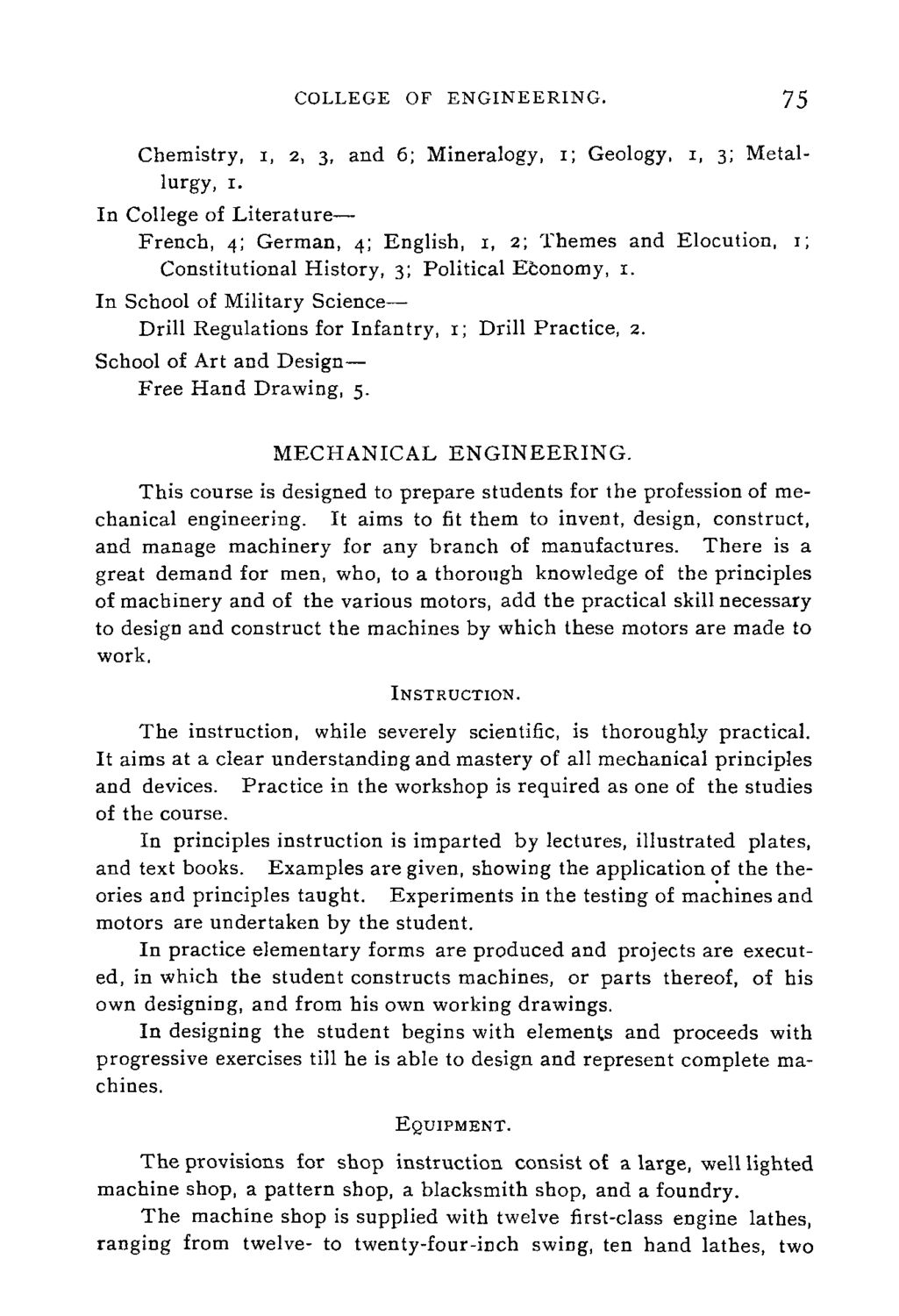| |
| |
Caption: Course Catalog - 1892-1893
This is a reduced-resolution page image for fast online browsing.

EXTRACTED TEXT FROM PAGE:
COLLEGE OF ENGINEERING. 75 Chemistry, i, 2, 3, and 6; Mineralogy, 1; Geology, 1, 3; Metallurgy, 1. In College of Literature— French, 4; German, 4; English, 1, 2; Themes and Elocution, 1; Constitutional History, 3; Political Economy, 1. In School of Military Science— Drill Regulations for Infantry, 1; Drill Practice, 2. School of Art and Design— Free Hand Drawing, 5. MECHANICAL E N G I N E E R I N G . This course is designed to prepare students for the profession of mechanical engineering. It aims to fit them to invent, design, construct, and manage machinery for any branch of manufactures. There is a great demand for men, who, to a thorough knowledge of the principles of machinery and of the various motors, add the practical skill necessary to design and construct the machines by which these motors are made to work. INSTRUCTION. The instruction, while severely scientific, is thoroughly practical. It aims at a clear understanding and mastery of all mechanical principles and devices. Practice in the workshop is required as one of the studies of the course. In principles instruction is imparted by lectures, illustrated plates, and text books. Examples are given, showing the application of the theories and principles taught. Experiments in the testing of machines and motors are undertaken by the student. In practice elementary forms are produced and projects are executed, in which the student constructs machines, or parts thereof, of his own designing, and from his own working drawings. In designing the student begins with elements and proceeds with progressive exercises till he is able to design and represent complete machines. EQUIPMENT. The provisions for shop instruction consist of a large, well lighted machine shop, a pattern shop, a blacksmith shop, and a foundry. The machine shop is supplied with twelve first-class engine lathes, ranging from twelve- to twenty-four-inch swing, ten hand lathes, two
| |